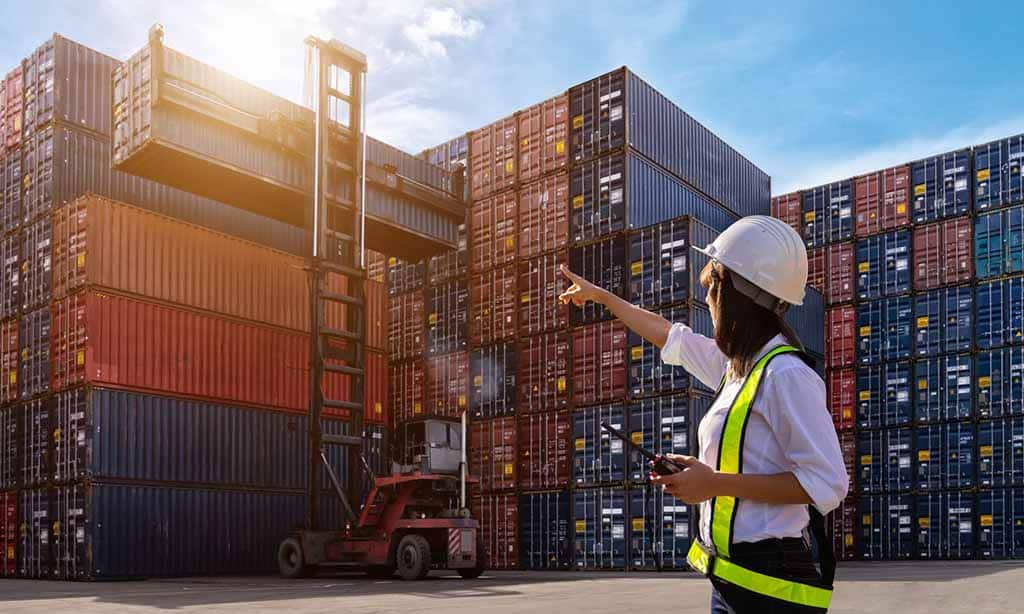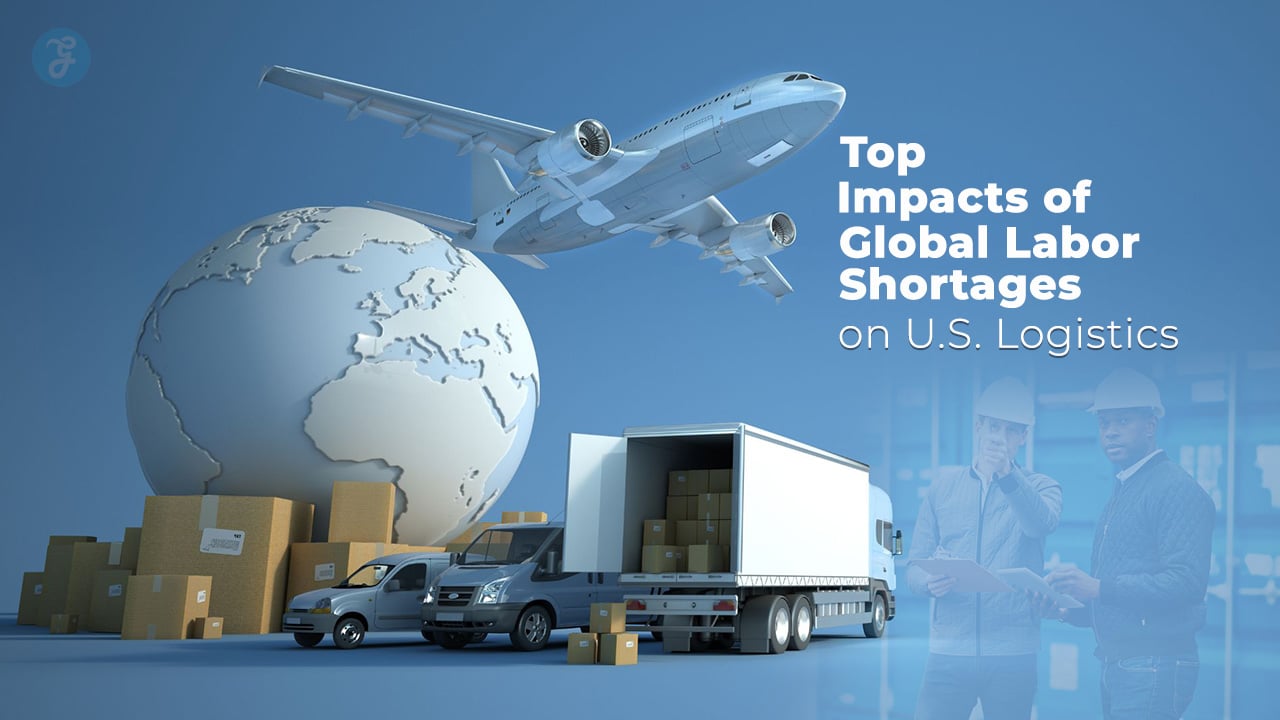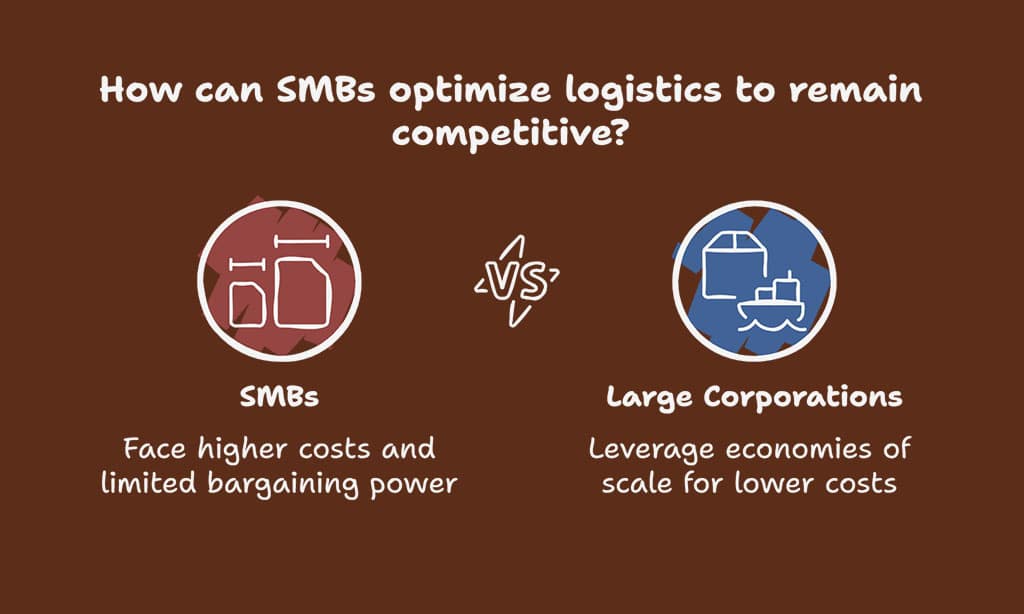The logistics industry is the backbone of the U.S. economy, ensuring that goods move efficiently across the country and beyond. However, global labor shortages have significantly disrupted supply chains, leading to increased costs, delays, and inefficiencies. From warehouse operations to last-mile delivery services, the workforce gap is straining businesses and impacting consumers alike.
In an industry that relies heavily on an interconnected network of drivers, warehouse workers, dockhands, and supply chain managers, workforce deficits create a domino effect. Companies struggle to keep up with demand, shipping times get extended, and costs soar.
With rising e-commerce trends and just-in-time supply chain models, these labor shortages are causing ripple effects across multiple industries, including retail, healthcare, and manufacturing.
This article will explore the Top 10 Impacts of Global Labor Shortages on U.S. Logistics, detailing the causes, effects, and potential solutions to one of the most pressing challenges facing the industry today.
Understanding the Global Labor Shortage Crisis

The global labor shortage is not a sudden phenomenon. Several long-term trends and recent disruptions have contributed to the crisis, including:
| Causes of Labor Shortage | Explanation |
| Aging Workforce | Many logistics roles, such as truck driving, rely on an aging workforce. As older employees retire, fewer young workers are replacing them. |
| Pandemic-Induced Job Shifts | The COVID-19 pandemic led to job losses, career changes, and early retirements, reducing the available workforce. |
| Skilled Labor Gaps | Advanced logistics operations require specialized skills, yet training programs have not kept pace with industry demand. |
| Workforce Preferences | Younger generations are shifting toward tech-driven jobs, reducing interest in physically demanding logistics roles. |
How U.S. Logistics Is Affected by Workforce Gaps
The logistics industry depends on workers across various roles, including warehouse employees, truck drivers, dockworkers, and supply chain coordinators. The labor shortage has led to:
| Impact | Effect |
| Increased dependence on automation and robotics | Companies are investing in technology to replace manual labor but face high costs and implementation challenges. |
| Higher operational costs | Companies are raising wages to attract talent, increasing transportation and storage costs. |
| Disruptions in freight movement | With fewer workers available, delays and inefficiencies in freight transportation are inevitable. |
The Top 10 Impacts of Global Labor Shortages on U.S. Logistics
The logistics sector in the U.S. is facing unprecedented challenges due to global labor shortages. These shortages have triggered widespread disruptions in supply chains, leading to inefficiencies that impact businesses, consumers, and economic stability.
Below, we explore the top ten ways in which labor shortages are influencing U.S. logistics and what companies can do to mitigate these effects.
1. Rising Shipping Costs
One of the most immediate effects of labor shortages in logistics is rising shipping costs. Businesses are paying higher wages to attract workers, and these increased costs are being passed down the supply chain.
Additionally, rising fuel costs, increased demand for freight services, and limited transport availability further exacerbate price hikes.
Companies are also struggling with fluctuating fuel surcharges and supply chain inefficiencies, making cost forecasting more challenging. Factors driving costs include:
| Factor | Impact on Logistics |
| Higher wages | Companies must offer competitive salaries to retain workers. |
| Fuel price fluctuations | Increasing costs of transportation raise the overall shipping expenses. |
| Freight surcharges | Limited labor availability results in additional fees for urgent deliveries. |
2. Delays in Freight Transportation
Labor shortages have resulted in major delays in freight movement across the U.S. Port congestion, lack of truck drivers, and warehouse staffing issues have all contributed to longer turnaround times. In some cases, shipments that previously took days now take weeks to be delivered.
The unpredictability in delivery schedules has forced companies to seek alternative routes and modes of transportation, further increasing operational costs.
Businesses are also experiencing increased dwell times at ports, adding to inventory shortages and cash flow issues. Key challenges include:
| Cause | Effect on Freight |
| Truck driver shortages | Delayed pickups and increased lead times for deliveries. |
| Limited port workers | Slower cargo clearance and port congestion. |
| Warehouse labor gaps | Reduced processing speed for inventory and shipments. |
3. Supply Chain Bottlenecks
The logistics sector has been struggling with supply chain disruptions caused by workforce shortages. Port congestion, lack of handlers, and inefficient distribution systems are worsening the crisis. Many businesses are facing difficulty in maintaining optimal inventory levels, leading to either overstocking or stockouts.
The increased pressure on existing workers has also resulted in higher turnover rates, further deepening the labor crisis.
Companies are now forced to explore alternative shipping routes and invest in logistics software to mitigate disruptions.
| Supply Chain Bottleneck | Consequence |
| Shipping container shortages | Slower turnaround times for goods, impacting global trade. |
| Understaffed warehouses | Delayed order processing and fulfillment. |
| Inventory mismanagement | Companies struggle to balance supply and demand. |
4. Increased Reliance on Automation
To counteract workforce shortages, logistics companies are turning to automation. Robots, AI-driven inventory management, and autonomous trucks are being integrated into supply chain operations. Companies are increasingly using AI to predict demand fluctuations, optimize warehouse space, and automate repetitive tasks. Autonomous vehicles and drone deliveries are being tested to streamline last-mile logistics.
These advancements, while promising, require significant investment and regulatory approvals before widespread adoption.
| Automation Trend | Impact |
| Robotic warehouses | Improves efficiency but requires high upfront investment. |
| AI-driven route optimization | Reduces costs but requires skilled workers to operate. |
| Self-driving trucks | Promising but faces regulatory challenges. |
5. Strain on Small and Mid-Sized Businesses
Small and mid-sized businesses (SMBs) face higher logistics costs compared to large corporations, making it difficult to compete. These businesses often lack the economies of scale that enable larger companies to negotiate lower rates with carriers.
Additionally, smaller enterprises frequently struggle with limited warehousing options and higher per-unit costs for shipping, further squeezing profit margins.
Many SMBs are now seeking alternative logistics strategies, such as partnering with third-party fulfillment services, to remain competitive in an evolving marketplace.
| SMB Challenge | Impact |
| Limited bargaining power | Higher shipping costs compared to bulk shippers. |
| Difficulty securing freight services | Large companies prioritize high-volume customers. |
| Higher cost absorption | Price increases make SMB products less competitive. |
6. Decline in Customer Satisfaction
Customers are experiencing longer delivery times and increased cancellations, leading to growing dissatisfaction and frustration.
Businesses are facing higher customer service demands due to order delays, resulting in increased inquiries and complaints.
Additionally, some consumers are switching to competitors with better logistics, impacting brand loyalty and revenue streams.
| Customer Issue | Business Impact |
| Late deliveries | Negative reviews and loss of repeat customers. |
| Product shortages | Lower sales and increased frustration. |
| Returns and refunds | Higher operational costs for businesses. |
7. Shifts in Employment Trends
Companies are offering incentives to attract workers, such as signing bonuses, flexible work arrangements, and enhanced benefits packages.
Many logistics firms are also investing in workforce training programs to address skill gaps and improve employee retention.
Additionally, businesses are leveraging technology to streamline workflows, reducing the strain on existing employees and improving overall job satisfaction.
| Employment Trend | Effect on Workforce |
| Gig work rise | Increased contract-based logistics jobs. |
| Higher salaries | Improved worker retention. |
8. Impact on Last-Mile Delivery Services
Last-mile delivery, crucial for e-commerce, has been severely disrupted. Labor shortages in courier services, warehouse staffing, and transportation logistics have led to longer delivery times and increased operational costs.
Companies are struggling to meet the high demand for fast shipping, forcing many to adopt alternative solutions such as localized fulfillment centers and gig economy drivers.
Businesses that fail to adapt risk losing customers to competitors offering more reliable delivery services.
| Challenge | Effect on Last-Mile Delivery |
| Driver shortages | Delays in package deliveries and increased service costs. |
| Warehouse labor gaps | Slower processing times and fulfillment delays. |
| Increased reliance on gig workers | More variability in service quality and reliability. |
9. Trade and Import/Export Disruptions
The global labor shortage is affecting trade flows. Supply chain disruptions have led to delays in import and export activities, affecting global commerce.
Countries that heavily rely on imports are experiencing higher costs, while exporters struggle with port congestion and a shortage of transport workers.
Businesses are now reevaluating supply chain strategies to mitigate these challenges.
| Trade Flow Disruption | Impact |
| Port congestion | Slower customs processing and delivery delays. |
| Increased shipping costs | Higher prices for imported goods and raw materials. |
| Export challenges | Reduced international trade efficiency and missed opportunities. |
10. Government Policies and Industry Response
To address the crisis, strategies include expanding workforce development programs, increasing incentives for skilled labor, and leveraging technological advancements to improve efficiency.
| Strategy | Expected Outcome |
| Work visa expansion | Increases available skilled labor. |
| Training investments | Bridges workforce gaps. |
| Automation adoption | Enhances efficiency and reduces dependence on manual labor. |
| Supply chain diversification | Reduces reliance on specific regions and mitigates risks. |
The Role of Artificial Intelligence in Addressing Labor Shortages
To tackle the ongoing labor crisis, many logistics companies are turning to Artificial Intelligence (AI) as a viable solution. AI-powered tools are being integrated into supply chain management, helping businesses optimize efficiency despite workforce gaps.
How AI Is Transforming Logistics
| AI Application | Benefits |
| Automated Route Planning | Reduces fuel costs and improves delivery efficiency. |
| AI-Powered Inventory Mgmt | Enhances accuracy and reduces stockouts or overstocking issues. |
| Robotic Warehousing | Speeds up order fulfillment and minimizes human labor needs. |
Future Outlook
While AI presents promising solutions, its implementation requires significant investment and skilled personnel. Companies must balance technology adoption with workforce development to create a sustainable logistics ecosystem.
Takeaways
The Top 10 Impacts of Global Labor Shortages on U.S. Logistics highlight rising costs, supply chain disruptions, and evolving workforce trends. To navigate these challenges, businesses must embrace automation, invest in reskilling their workforce, and explore alternative supply chain strategies.
Additionally, collaboration with policymakers can help shape labor policies that promote long-term stability and economic growth.
A resilient logistics sector will be key to sustaining business operations and meeting consumer demands in the years to come.



































